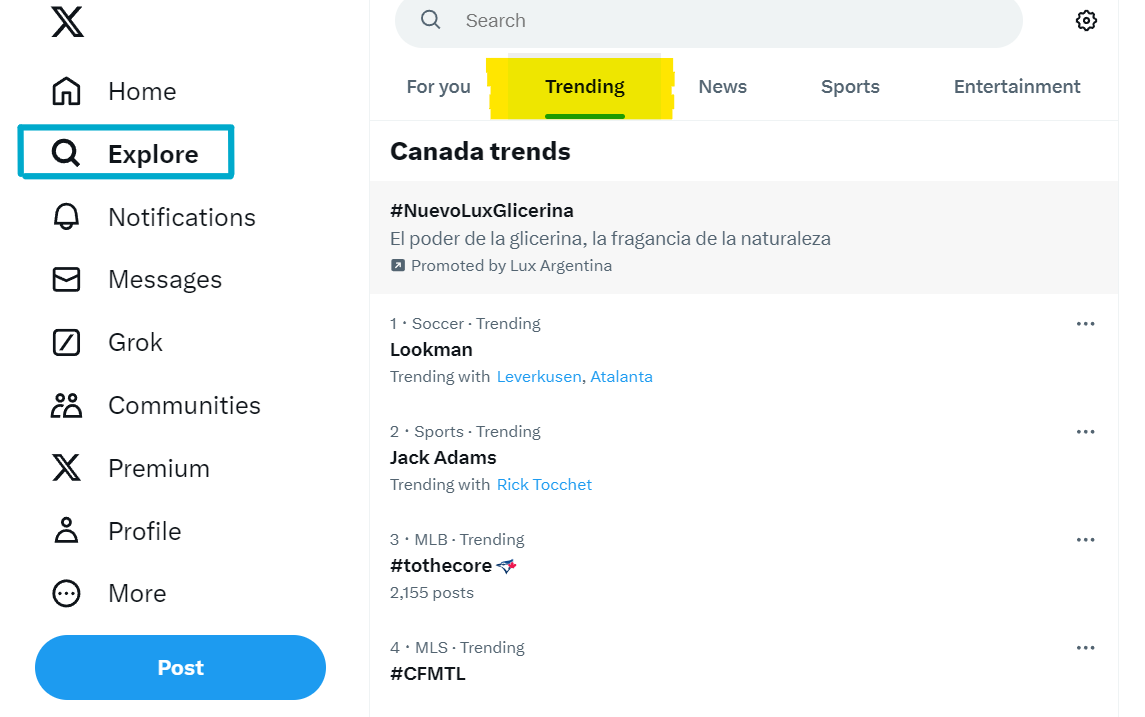What Are Twitter Trends?
Twitter trends are a way for Twitter to highlight popular topics that many people are talking about at a given time. Trends can be based on hashtags, specific keywords or phrases, or general topics. Twitter's algorithm identifies trending topics by analyzing factors like how many tweets mention the topic, how quickly conversation volume increases, and from which locations the tweets originate.
Trends appear on the left side of the Twitter homepage or in search results. Clicking on a trend brings up a feed of tweets related to that topic. Twitter tailors which trends each user sees based on their location and who they follow. Some trends are specific to a city, state, or country, while others are worldwide.
While some trends reflect major news events, sports, entertainment, or holidays, many trends emerge organically from Twitter users. Hashtags play a big role in creating trends on Twitter. When many people include the same hashtag in their tweets, it can spark a trend. The more a hashtag is used in a short period of time, the more likely it will trend.

Why Do Twitter Trends Matter?
Twitter trends hold a lot of importance for several reasons:
1. They give insight into what the public cares about and is discussing at any given moment. For marketers, journalists, and researchers, Twitter trends act as a real-time pulse on society. 2. When many people are talking about the same thing, it creates a shared experience and a sense of community on Twitter. Users feel connected to a larger conversation. 3. For brands, trends present an opportunity to jump into relevant discussions to increase visibility and engagement. Brands can search for trends related to their industry and tailor their tweets around them. 4. Trends can also uncover emerging issues or concerns among the public. By paying attention to trends, brands can stay informed about their audience. 5. Hashtags that create trends often go viral and receive mainstream media coverage. This extends the reach of the conversation.
How to Find and Participate in Twitter Trends
Finding Twitter trends is very straightforward. Simply check the "Trends for you" section on the left side of your Twitter homepage. You can click "Change" to choose a specific location for which you want to see trends. Twitter also lets you see worldwide trends or trends in any city or country. If a trend catches your eye, click on it to view the tweets. Read through to get a sense of the conversation. Then consider how you can add value. You might:
- Share an insightful comment
- Ask a thought-provoking question
- Provide helpful resources
- Tell a relevant story or anecdote
- Express an opinion (respectfully)
- Use humor or wit
- Create a poll
Including the trending hashtag in your tweets can expose you to a larger audience. But avoid overusing hashtags or jumping on irrelevant trends just to get noticed. Focus on participating authentically.
Brands should be especially mindful when participating in trends. Make sure the trend aligns with your values and that your input is relevant and appropriate. Avoid capitalizing on sensitive topics or tragedies. When in doubt, sit a trend out.

Tips for Using Trends in Your Twitter Marketing Strategy
For marketers, Twitter trends present an opportunity to expand reach and engagement. Here are some tips to incorporate trends into your Twitter strategy:
1. Look for trends relevant to your industry or niche. Use these to spark content ideas and discussions. 2. When major events are happening (like sports championships, award shows, election nights, etc), keep an eye on trends to find opportunities to join the conversation. But always add value - don't just use trending hashtags for the sake of it. 3. Host a Twitter chat around a trending topic in your field. Invite experts and thought leaders to share their insights. 4. Create Twitter polls related to trends to gauge your audience's opinions and encourage engagement. 5. Use trends for social listening. What are people saying about your brand, competitors or industry? Are any concerns or problems emerging? 6. Analyze trending hashtags and topics to better understand your target audience's interests and behaviors. These insights can inform your overall marketing strategy. 7. Consider creating your own branded hashtag and campaign to start a trend. Promote it across channels to gain momentum.
Bonus tip: Many social media management and analytics tools can help you track and analyze Twitter trends. These tools make it easier to understand conversations and measure your efforts.
Common Questions About Twitter Trends
Here are answers to some frequently asked questions about Twitter trends:
How often do Twitter trends update?
Twitter updates trends in real-time based on the latest emerging topics. The list of trends can change frequently throughout the day.
What determines what trends show up on my Twitter homepage?
Twitter personalizes trends for each user based on their location and who they follow. Trends are a combination of overall popularity and relevance to the user. You can also choose to see trends for a specific location.
How are Twitter trends different from hashtags?
Hashtags are a way to categorize and track conversations on Twitter. But not all hashtags become trends. A hashtag becomes a trend when its usage increases significantly in a short time period. And not all trends include hashtags - trends can be based on keywords and phrases too.
Can I see past Twitter trends?
Twitter focuses on current real-time trends. Once a trend is gone, it's no longer accessible on Twitter. But some third party tools archive past Twitter trend data.
What are promoted trends?
Promoted trends are paid ads that appear in the Trends list. They are clearly labeled as "Promoted." Any advertiser can pay to promote a hashtag as a trend, but not all promoted trends catch on organically with users.
Twitter trends offer a window into the public zeitgeist and an opportunity to expand your reach and engagement. By understanding what trends are and strategically participating in them, you can enhance your Twitter experience and effectiveness. Jump into those trending conversations - and maybe even start some of your own!



